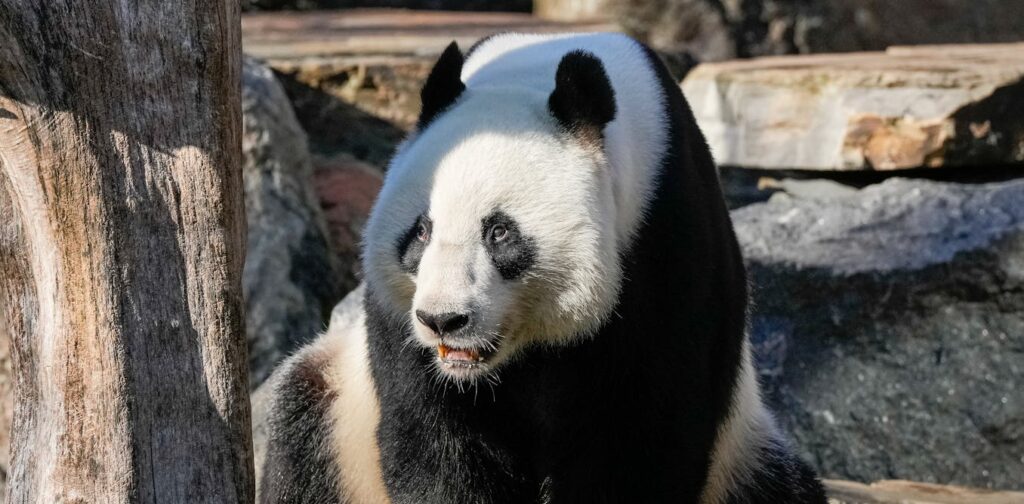Chinese Premier Li Qiang announced on Sunday during a visit to Adelaide Zoo that China would donate two “equally beautiful, lively, cute and young” pandas to Australia to replace Wang Wang and Fu Ni, who have called Adelaide home for 15 years and will be returning to China later this year.
The gifting of pandas to other countries has long been a part of Chinese diplomacy, but what exactly is this unique approach to Chinese soft power, why does it work, and what impact does it now have on Australia-China relations?
China’s Panda Diplomacy from Mao to the Present
China’s panda diplomacy began in the 1950s, when the newly established Communist government under Chairman Mao Zedong began gifting pandas to socialist allies to strengthen ideological ties and foster diplomatic goodwill.
China’s first panda “ambassadors,” Ping Ping and Qi Qi, arrived in the Soviet Union in 1957 to celebrate the 40th anniversary of the October Revolution, which saw the Bolshevik Party seize power in Russia.
A defining moment came in 1972, when US President Richard Nixon presented the two pandas, Ling Ling and Xing Xing, to the United States after his historic visit to Beijing. The gesture symbolized a strategic shift in China’s foreign policy, deepening engagement with the West and easing Cold War tensions.

First Lady Pat Nixon looks at pandas during a visit to the Beijing Zoo in 1972. Richard Nixon Library Oral History Collection / Wikimedia Commons
Later that year, Japan also welcomed two pandas, Kang Kang and Lan Lan, after normalizing diplomatic ties with China.
By 1984, under the leadership of Deng Xiaoping, panda diplomacy had shifted from direct gifts to long-term loans, embodying China’s market-oriented economic reforms.
Under the leasing model, pandas are rented out for a large fee — typically between $500,000 and $1 million ($755,000 to $1.5 million) a year — with revenues going towards conservation efforts in China. Such agreements also usually foster joint research projects on panda conservation and foster diplomatic relations as well as scientific collaboration.
The only giant pandas currently living in the Southern Hemisphere, Adelaide’s Wang Wang and Fu Ni, came to Australia under this agreement in 2009.
Under China’s current leader, Xi Jinping, panda diplomacy has been frequently used to symbolize China’s willingness to strengthen bilateral ties with other countries.
For example, Malaysia received two pandas to commemorate the 40th anniversary of diplomatic relations with China in 2014. Similarly, two pandas were sent to Indonesia in 2017 as part of the 60th anniversary of bilateral relations between the two countries.

A female panda born to Liang Liang and Xin Xin, who were on loan to Malaysia from China for 10 years from 2014, at the National Zoo in Kuala Lumpur, Malaysia. Vincent Tian/AP
The loan of the two pandas to Germany in 2017 coincided with Xi Jinping’s visit to Berlin, where he and then-German Chancellor Angela Merkel also attended the official opening of the Berlin Zoo’s panda enclosure.
Recent tensions between the U.S. and China have not hampered panda diplomacy. Last year, the U.S. returned three pandas to China from the Smithsonian Zoo in Washington – Tian Tian, Mei Xiang and their American-born son Xiaoqiji (which means “little miracle” in Chinese). But President Xi said two new giant pandas would take their place later this year, calling them “ambassadors of friendship between the Chinese and American peoples.”
Why pandas and what is the challenge?
If you haven’t guessed it yet, pandas are cute and charming, and because of their gentle demeanor, they have been considered a symbol of peace and friendship.
But the appeal of the panda doesn’t end there. Although the panda is clearly endemic to China – living only there in the wild – it has universal appeal. Pandas have long been used to draw global attention to endangered and vulnerable species and to highlight issues such as climate change. In fact, the logo of the World Wildlife Fund is a panda, further testament to its appeal as a universal symbol of the conservation movement.
Despite their effectiveness as ambassadors, pandas are extremely difficult to breed in captivity due to their narrow mating window and complex requirements. For example, Wang Wang and Fu Ni failed to conceive despite considerable efforts at Adelaide Zoo.
Another challenge is that meeting the stringent requirements for panda captivity can put significant economic pressure on host countries.
This raises the question of whether the funds should instead be redirected to other projects in need of financial resources.
Read more: Panda diplomacy: What China’s decision to send bears to the US reveals about the country’s economy
How successful will Li’s panda diplomacy be in Australia?
Premier Li Keqiang’s visit to Adelaide Zoo, the first stop on his Australian tour, symbolizes China’s willingness to stabilize and improve relations with Australia.
Li’s action, in response to Prime Minister Anthony Albanese’s call for the pandas to remain in Australia during a visit to China last November, represents a significant diplomatic move after years of frosty relations between the two countries.
An empirical study conducted in the United States found that panda diplomacy has been relatively effective in fostering positive attitudes toward China’s culture, people, and government.
But there’s only so much the pandas can do: Recent polls suggest that Australians remain wary of Beijing, despite an improvement in diplomatic ties over the past year.
Additionally, serious challenges are expected to continue to test Australia-China relations, including Australia’s strengthening security alliance with the United States, the imprisonment of Chinese-Australian author Yang Hengjun, and recent confrontations between Chinese and Australian militaries.
That has led some commentators to warn Albanese not to turn Li’s visit into a “propaganda boon” for China. Ultimately, the true measure of success in bilateral relations lies in concrete policy changes and mutual trust, beyond the symbolism of panda diplomacy.


